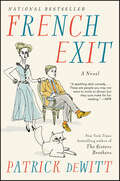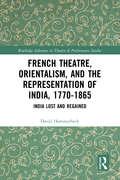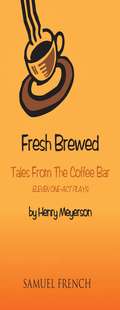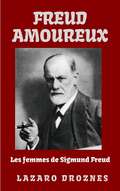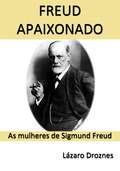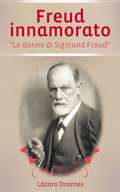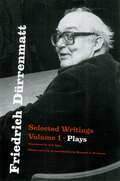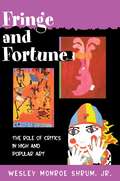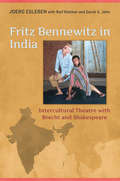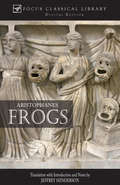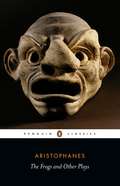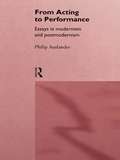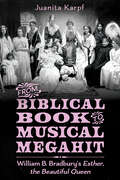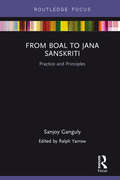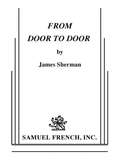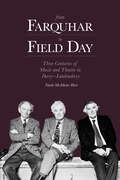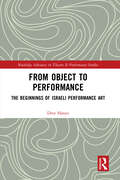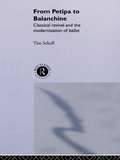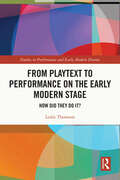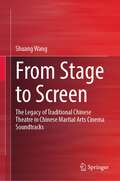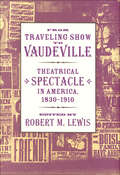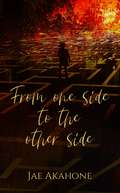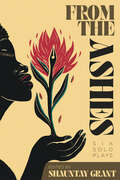- Table View
- List View
French Exit: A Novel
by Patrick deWittNow a Major Motion Picture Starring Michelle Pfeiffer and Lucas Hedges, directed by Azazael JacobsA Recommended Read from:Vanity Fair * Entertainment Weekly * Vulture * The Millions * Publishers Weekly * EsquireFrom bestselling author Patrick deWitt, a brilliant and darkly comic novel about a wealthy widow and her adult son who flee New York for Paris in the wake of scandal and financial disintegration.Frances Price – tart widow, possessive mother, and Upper East Side force of nature – is in dire straits, beset by scandal and impending bankruptcy. Her adult son Malcolm is no help, mired in a permanent state of arrested development. And then there’s the Price’s aging cat, Small Frank, who Frances believes houses the spirit of her late husband, an infamously immoral litigator and world-class cad whose gruesome tabloid death rendered Frances and Malcolm social outcasts.Putting penury and pariahdom behind them, the family decides to cut their losses and head for the exit. One ocean voyage later, the curious trio land in their beloved Paris, the City of Light serving as a backdrop not for love or romance, but self destruction and economical ruin – to riotous effect. A number of singular characters serve to round out the cast: a bashful private investigator, an aimless psychic proposing a seance, and a doctor who makes house calls with his wine merchant in tow, to name a few. Brimming with pathos, French Exit is a one-of-a-kind 'tragedy of manners,' a send-up of high society, as well as a moving mother/son caper which only Patrick deWitt could conceive and execute.
French Theatre, Orientalism, and the Representation of India, 1770-1865: India Lost and Regained (Routledge Advances in Theatre & Performance Studies)
by David HammerbeckThis book examines the French theatricalization of India from 1770 to 1865 and how a range of plays not only represented India to the French viewing public but also staged issues within French culture including colonialism, imperialism, race, gender, and national politics. Through examining these texts and available performance history, and incorporating historical texts and cultural theory, David Hammerback analyses these works to illustrate a complex of cultural representations: some contested Orientalism, some participated in Western colonialist discourses, while some can be placed somewhere between these two markers of ideology in Western culture and the arts. He also assesses the works which participated in shaping the theatrical face of Western hegemony, ones directly participating in Orientalism as delineated by Edward Said and others. This book will be of great interest to students and scholars in theatre, French literature, history and cultural studies.
French Visual Culture and the Making of Medieval Theater
by Laura WeigertThis book revives what was unique, strange and exciting about the variety of performances that took place in the realms of the French kings and Burgundian dukes. Laura Weigert brings together a wealth of visual artifacts and practices to explore this tradition of late medieval performance located not in 'theaters' but in churches, courts, and city streets and squares. By stressing the theatricality rather than the realism of fifteenth-century visual culture and the spectacular rather than the devotional nature of its effects, she offers a new way of thinking about late medieval representation and spectatorship. She shows how images that ostensibly document medieval performance instead revise its characteristic features to conform to a playgoing experience that was associated with classical antiquity. This retrospective vision of the late medieval performance tradition contributed to its demise in sixteenth-century France and promoted assumptions about medieval theater that continue to inform the contemporary disciplines of art and theater history.
Fresh Brewed: Tales from the Coffee Bar
by Henry MeyersonFresh Brewed is a collection of eleven plays, all of which take place in a coffee bar, all of which use the same set of two small tables and four chairs, and all of which can be performed by two male and two female actors in various combinations from a monologue to two quartets. If all of the plays are performed in one evening, there should be no black outs between plays. Simply changing the composition of the cast can signal the audience of movement between plays. On the hand, each play is written so that it can be performed as a stand alone work. If done as a unit, I suggest the following order. At the least, I would recommend opening with No Prune, and closing with I Fell Swell.
Freud Amoureux: Les femmes de Sigmund Freud
by Lázaro DroznesDrame de fiction basé sur la relation clandestine de Sigmund Freud avec sa belle-soeur Minna Bernays, qui, pour aggraver les choses, vivait dans la même maison avec toute sa famille. Cette relation a été récemment confirmée par des preuves historiques et a été l'un des secrets les mieux gardés de la vie de Freud. Martha Bernays et sa sœur Minna ont vécu ensemble 40 ans à Vienne avec les 5 enfants de la famille Freud et ont partagé l'amour de l'un des scientifiques qui a le plus contribué au changement des comportements sexuels au cours du XXe siècle
Freud Apaixonado: As mulheres de Sigmund Freud
by Lázaro Droznes Doriane GaiaFicção dramática baseada no relacionamento clandestino de Sigmund Freud com sua cunhada Minna Bernays, que para piorar, vivia em sua própria casa com toda a sua família. Esta relação tem sido comprovada de forma confiável nos últimos anos e tornou-se em um dos segredos mais bem guardados da vida de Freud. Marta e sua irmã Minna Bernays viveram em Viena, por 40 anos, com os 5 filhos do casamento e compartilharam o amor de um dos cientistas que mais contribuíram para a mudança dos costumes e hábitos sexuais do século XX.
Freud Innamorato
by Lázaro Droznes Gabriele CesariniUn dramma di fantasia basato sulla relazione clandestina tra Sigmund Freud e sua cognata Minna Bernays, la quale, per rendere ancor peggiore la situazione, andò a vivere a casa sua e con tutta la sua famiglia. Questa relazione fu confermata più tardi da prove storiche ed è stata uno dei segreti meglio nascosti della vita di Freud. Martha Bernays e sua sorella Minna vissero assieme per 40 anni a Vienna con i 5 figli di Freud e condivisero l'amore di uno degli specialisti che diedero il maggior contributo al cambiamento del comportamento sessuale nel XX secolo.
Friedrich Dürrenmatt: Selected Writings, Volume I, Plays
by Joel Agee Friedrich Dürrenmatt Kenneth J. NorthcottThe Swiss writer Friedrich Dürrenmatt (1921–90) was one of the most important literary figures of the second half of the twentieth century. During the years of the cold war, arguably only Beckett, Camus, Sartre, and Brecht rivaled him as a presence in European letters. Yet outside Europe, this prolific author is primarily known for only one work, The Visit. With these long-awaited translations of his plays, fictions, and essays, Dürrenmatt becomes available again in all his brilliance to the English-speaking world. Dürrenmatt’s concerns are timeless, but they are also the product of his Swiss vantage during the cold war: his key plays, gathered in the first volume of Selected Writings, explore such themes as guilt by passivity, the refusal of responsibility, greed and political decay, and the tension between justice and freedom. In The Visit, for instance, an old lady who becomes the wealthiest person in the world returns to the village that cast her out as a young woman and offers riches to the town in exchange for the life of the man, now its mayor, who once disgraced her. Joel Agee’s crystalline translation gives a fresh lease to this play, as well as four others: The Physicists, Romulus the Great, Hercules and the Augean Stables, and The Marriage of Mr. Mississippi. Dürrenmatt has long been considered a great writer—but one unfairly neglected in the modern world of letters. With these elegantly conceived and expertly translated volumes, a new generation of readers will rediscover his greatest works.
Fringe and Fortune: The Role of Critics in High and Popular Art
by Wesley Monroe ShrumWhy does the distinction between high and popular art persist in spite of postmodernist predictions that it should vanish? Departing from the conventional view that such distinctions are class-related, Wesley Shrum concentrates instead on the way individuals form opinions about culture through the mediation of critics. He shows that it is the extent to which critics shape the reception of an art form that determines its place in the cultural hierarchy. Those who patronize "lowbrow" art--stand-up comedy, cabaret, movies, and popular music--do not heed critical opinions nearly as much as do those who patronize "highbrow" art--theater, opera, and classical music. Thus the role of critics is crucial to understanding the nature of cultural hierarchy and its persistence. Shrum supports his argument through an inquiry into the performing arts, focusing on the Edinburgh Fringe, the world's largest and most diverse art festival. Beginning with eighteenth-century London playhouses and print media, where performance art criticism flourished, Shrum examines the triangle of mediation involving critics, spectators, and performers. The Fringe is shown to parallel modern art worlds, where choices proliferate along with the demand for guidance. Using interviews with critics and performers, analysis of audiences, and published reviews as well as dramatic vignettes, Shrum reveals the impact of critics on high art forms and explores the "status bargain" in which consumers are influenced by experts in return for prestige.
Fritz Bennewitz in India: Intercultural Theatre with Brecht and Shakespeare
by David G. John Joerg Esleben Rohmer RolfThis volume offers the first comprehensive analysis of the work of East German theatre director Fritz Bennewitz in India between 1970 and 1994. Joerg Esleben has gathered together many of Bennewitz’ own writings, most published for the first time, in which he reflects on his production of plays by Bertolt Brecht, Shakespeare, Goethe, Chekhov, and Volker Braun. By translating these writings into English, the editors have provided unprecedented access to Bennewitz’ thinking about intercultural work in India. This material is illuminated by explanatory annotations, contextualized commentary, and critical perspectives from Bennewitz’s former colleagues in India and other leading scholars. Through its kaleidoscope of perspectives, Fritz Bennewitz in India offers a significant counter to dominant models of Western theatrical interculturalism.
Frogs
by Aristophanes Jeffrey HendersonThis is an English translation of Aristophanes' popular comedy in which the god Dionysus seeks to bring the great dramatist Euripides from Hades, where he encounters another great Classical playwright, Aeschylus. Includes background material on the historical and cultural context of this work, suggestions for further reading, and notes. The Focus Classical Library provides close translations with notes and essays to provide access to understanding Greek culture and the roots of contemporary thought.
Frogs and Other Plays
by AristophanesThe master of ancient Greek comic drama, Aristophanes combined slapstick, humour and cheerful vulgarity with acute political observations. In The Frogs, written during the Peloponnesian War, Dionysus descends to the Underworld to bring back a poet who can help Athens in its darkest hour, and stages a great debate to help him decide between the traditional wisdom of Aeschylus and the brilliant modernity of Euripides. The clash of generations and values is also the object of Aristophanes’ satire in The Wasps, in which an old-fashioned father and his loose-living son come to blows and end up in court. And in The Poet and the Women, Euripides, accused of misogyny, persuades a relative to infiltrate an all-women festival to find out whether revenge is being plotted against him.
From Acting to Performance: Essays in Modernism and Postmodernism
by Philip AuslanderFrom Acting to Performance collects for the first time major essays by performance theorist and critic Philip Auslander. Together these essays provide a survey of the changes in acting and performance during the crucial transition from the ecstatic theatre of the 1960s to the ironic postmodernism of the 1980s. Auslander examines performance genres ranging from theatre and dance to performance art and stand-up comedy. In doing so he discusses an impressive line-up of practitioners including Antonin Artaud, Jerzy Grotowski, Peter Brook, Willem Dafoe, the Wooster Group, Augusto Boal, Kate Bornstein, and Orlan. From Acting to Performance is a must for all students and scholars interested in contemporary theatre and performance.
From Biblical Book to Musical Megahit: William B. Bradbury's Esther, the Beautiful Queen
by Juanita KarpfMany churchgoers will recognize the name William Bradbury, a nineteenth-century American composer of popular hymns still sung at Sunday services. Bradbury’s name may also bring to mind Esther, the Beautiful Queen, his choral setting of a text based on the biblical Book of Esther. The uncomplicated score became enormously popular almost immediately after its initial publication in 1856. In From Biblical Book to Musical Megahit: William B. Bradbury’s “Esther, the Beautiful Queen,” Juanita Karpf traces the work’s rich performance and reception history. Bradbury emphatically stated that he intended Esther to be sung as an unadorned religious and educational piece. Yet many music directors exploited the potential for his score, producing elaborately staged events with costumes, scenery, and acting. Although directors retained Bradbury’s original music, they nonetheless facilitated Esther’s rapid entrée into the realm of music theater. This stylistic transformation ignited a firestorm of controversy. Some clergy and religiously pious citizens condemned theatrical representations of biblical texts as the epitome of debauchery, sacrilege, and sin. In contrast, more tolerant and open-minded theater enthusiasts welcomed the dramatic staging of Esther as wholesome entertainment and as evidence of a refreshingly enlightened approach to biblical interpretation. However heated this debate seemed at times, it did little to quell the continued rise in popularity of Esther. In fact, by the late 1860s, Bradbury’s score had worked its way across the continent, north to Canada and, eventually, to Great Britain, Australia, Asia, and Africa. With performances recorded over a century after Bradbury published his score, Esther became, by any measure, an international megahit.
From Boal to Jana Sanskriti: Practice and Principles
by Sanjoy GangulyJana Sanskriti is internationally recognised as the most iconic post-Boalian Theatre of the Oppressed operation in the world today. This fully illustrated book by the Bengali company's founder and artistic director Sanjoy Ganguly, edited by Ralph Yarrow, collects and explains their programme of workshop exercises, placing them in the context of their social and activist work. A set of interviews with Ganguly complements these practical sequences, drawing in topics such as the role of the joker, the nature of development, participation and agency, aesthetics as transformation, and Theatre of the Oppressed in the context of a market economy.
From Door to Door
by James ShermanA heartwarming, bittersweet comedy about three generations of American women. Mary Goodman, a woman of the "greatest generation" is mourning the loss of her husband. Her daughter, Deborah, is encouraging her to end her period of mourning and move on with a new independence. In a series of scenes between Mary, Deborah, and Mary's mother, Bessie, Mary reflects back on her life as a daughter, wife and mother. A trio of actresses plays the three women over the course of sixty-five years. As Mary's life progresses from childhood to matrimony to motherhood, we see how each successive generation of women lives up to the expectations of the past and makes brave new choices about the future. At the end of the play, the three women stand as links in a chain made of faith, love, and understanding.
From Farquhar to Field Day: Three Centuries of Music and Theatre in Derry~Londonderry
by Nuala McAllister HartDerry~Londonderry has a distinctive cultural history which reflects its unique position in the history of Ireland. This ground-breaking book examines three centuries of music and theatre in the city highlighting the key figures and turning points in its cultural life. It documents the rich diversity of drama and concerts played out in the city’s theatres and concert halls, from the birth of playwright George Farquhar in 1677 to performances by the Field Day Theatre Company and the cultural revival of the 1990s and beyond.
From Narcissism to Nihilism: Self-Love and Self-Negation in Early Modern Literature (Routledge Studies in Renaissance Literature and Culture)
by Anthony ArchdeaconThis book explores how the myth of Narcissus, which is at once about self-love and self-destruction, desire and death, beauty and pain, became an ambivalent symbol of humanistic endeavour, and articulated the conflicts of early modern authorship. In early modern literature, there were expressions of humanistic self-congratulation that sometimes verged on narcissism, and at the same time expressions of self-doubt and anxiety that verged on nihilism. The themes of self-love and self-negation had a long history in western thought, and this book shows how the medieval treatments of the themes developed into something distinctive in the sixteenth century. The two themes, either individually or combined, encompass such topics as poverty, unrequited love, transgressive sexuality, sexual violence, suicidality, self-worth, authorship, religious penitence, martyrdom, courtly ambition and tyranny. Archdeacon uses over 100 texts from the sixteenth and early seventeenth centuries to show how the early modern writer existed in a culture of contrary forces pulling towards either self-affirmation or self-erasure. Writers attempted to negotiate between the polarised extremes of self-love and self-negation, realising that they are fundamental to how we respond to each other, our selves and the world.
From Object to Performance: The Beginnings of Israeli Performance Art (Routledge Advances in Theatre & Performance Studies)
by Dror HarariFrom Object to Performance identifies, analyses, and critically contemplates the advent of a “performance mentality” and the gradual maturation of a “performative turn” in Israeli art.Manifested in the transition from object-oriented art to performance-based art, this cultural moment reflected both the exposure and responsiveness of young Israeli artists to experimental currents in North American and Western European art and these artists’ need to respond to acute social and political conditions, questioning Israeli national myths and collectivist ideals. From Object to Performance offers the first comprehensive exploration of the origins of action and performance art in Israel, contributes an important component to unravelling the global enigma of performance art histories, and considers the historiographic challenges encountered when studying the emergence and early years of performance-based practices. This book will appeal to students and scholars of performance studies, art history, cultural studies, and Israel studies, as well as to curators of contemporary art and performance, and artists. The book should also be of interest to the growing number of theater and art historians who research the beginnings and development of action and performance art.
From Petipa to Balanchine: Classical Revival and the Modernisation of Ballet
by Tim SchollIn this rich interdisciplinary study Tim Scholl provides a provocative and timely re-evaluation of the development of ballet from the 1880s to the middle of the twentieth century. In the light of a thoughtful re-appraisal of dance classicism he locates the roots of modern ballet in the works of Marius Petipa, rather than in the much-celebrated choreographic experiements of Diaghilev's Ballet Russe.Not only is this the first book to present nineteenth- and twentieth-century ballet as a continuous rather than broken tradition, From Petipa to Balanchine places works such as Sleeping Beauty, Les Sylphides, Apollo and Jewells in their proper cultural and artistic context.The only English-language study to be based on the original Russian soures, this book will be essential reading for all dance scholars. Written in an engaging and elegant style it will also appeal to anyone interested in the history of ballet generally.
From Playtext to Performance on the Early Modern Stage: How Did They Do It? (Studies in Performance and Early Modern Drama)
by Leslie ThomsonThis book reconsiders the evidence for what we know (or think we know) about early modern performance conditions. This study encourages a new recognition and treatment of certain aspects of the plays as evidence – and demonstrates the significance of the implications of that new information. This book is also an assessment of the competing narratives about the processes involved in early modern performance: about the status of manuscript playbooks, about the parts that players memorized, about the functions of the bookkeeper, about casting, about prompting, and about rehearsal practices. Leslie Thomson investigates the bases for the interdependent beliefs that an early modern player relied only on his part to prepare for a performance, that rehearsal was minimal, and that a bookkeeper compensated for these circumstances by prompting any player who was "out of his part." By focusing on often ignored (or downplayed) requirements and challenges of early modern play texts, Thomson provides evidence for answers that will foster a more nuanced and thorough understanding of original performance practices. That will, in turn, influence how we read, study, and edit the plays. This exploration will be of great interest to theatre and performance researchers, graduate students, teachers of early modern drama at the undergraduate and graduate levels, performers, directors, editors.
From Stage to Screen: The Legacy of Traditional Chinese Theatre in Chinese Martial Arts Cinema Soundtracks
by Shuang WangChinese martial arts cinema is held to be a synthesis drawing on artistic conventions of traditional Chinese theatre. Film sound and music perform as the legitimate heirs of some of the aesthetic ideas and norms of traditional Chinese theatre. This book critically examines the history of this under-explored field of inquiry from a theoretically comparative perspective, demonstrating that the musical codes drawn from traditional theatre are a constantly changing component integral to Chinese martial arts cinema. It explores the interaction between traditional Chinese theatre and Chinese martial arts cinema in how the musical codes of the former have shaped the aesthetics of the latter uniquely. This departs from conventional existing studies that focus on “adaptation.” The book’s historical and theoretical approach connects film, theatre and music, and re-defines the status of distinctive domains of filmic expression, grounding theatre as the pivot – or “hinge” – of film aesthetics. The book proffers this unique angle of research to rethink and re-imagine film sound and audiovisual synchronisation. Primarily intended for scholars in Chinese cinema, film music, Chinese theatre and visual culture, this monograph also presents introductory and comprehensive material for undergraduate and graduate-level courses in film and media studies, film music, Chinese cinema, and Chinese theatre.
From Traveling Show to Vaudeville: Theatrical Spectacle in America, 1830–1910
by Robert M. LewisBefore phonographs and moving pictures, live performances dominated American popular entertainment. Carnivals, circuses, dioramas, magicians, mechanical marvels, musicians, and theatrical troupes—all visited rural fairgrounds, small-town opera houses, and big-city palaces around the country, giving millions of people an escape from their everyday lives for a dime or a quarter. In From Traveling Show to Vaudeville, Robert M. Lewis has assembled a remarkable collection of nineteenth- and early twentieth-century primary sources that document America's age of theatrical spectacle. In eight parts, Lewis explores, in turn, dime museums, minstrelsy, circuses, melodramas, burlesque shows, Wild West shows, amusement parks, and vaudeville.Included in this compendium are biographies, programs, ephemera produced by theatrical entrepreneurs to lure audiences to their shows, photographs, scripts, and song lyrics as well as newspaper accounts, reviews, and interviews with such figures as P. T. Barnum and Buffalo Bill Cody. Lewis also gives us reminiscences about and reactions to various shows by members of audiences, including such prominent writers as Mark Twain, William Dean Howells, Nathaniel Hawthorne, Carl Sandburg, Walt Whitman, Louisa May Alcott, Charles Dickens, O. Henry, and Maxim Gorky. Each section also includes a concise introduction that places the genre of spectacle into its historical and cultural context and suggests major interpretive themes. The book closes with a bibliographic essay that identifies relevant scholarly works.Many of the pieces collected here have not been published since their first appearance, making From Traveling Show to Vaudeville an indispensable resource for historians of popular culture, theater, and nineteenth-century American society.
From one side to the other side
by Jae AkahoneIt's a series of two short stories. The first story is about someone who wants to wean from drugs and the second story takes place in a psychiatric hospital.
From the Ashes: Six Solo Plays
by Shauntay GrantFrom the Ashes collects solo plays by Black Canadian women and womxn that together celebrate the hope, humour, and healing that can come after devastation and loss. From lighthearted comedies to heavy dramas, this anthology contains a multitude of stories on Blackness, love, motherhood, sexuality, trauma, racism, mythology, and more.In Georgeena by Djanet Sears, a bride speeds down the highway, struggling to make sense of what led her to that moment. In benu by d’bi.young anitafrika, a young woman faces motherhood while still coming to terms with her own motherlessness. Makambe K Simamba’s A Chitenge Story follows a young woman who travels to her native Zambia to find and confront the man who abused her as a child. Ngozi Paul’s The Emancipation of Ms. Lovely chronicles a woman throughout different stages of her life that relate to her sexual awakening. In The Sender by Cheryl Foggo, a woman working for a global racism-elimination project encounters some technical difficulties when someone unexpectedly objects to the project’s restrictions. And in Kalale Dalton-Lutale’s Crybaby, a young woman falls in love for the first time, which opens a well of questions about her identity.
